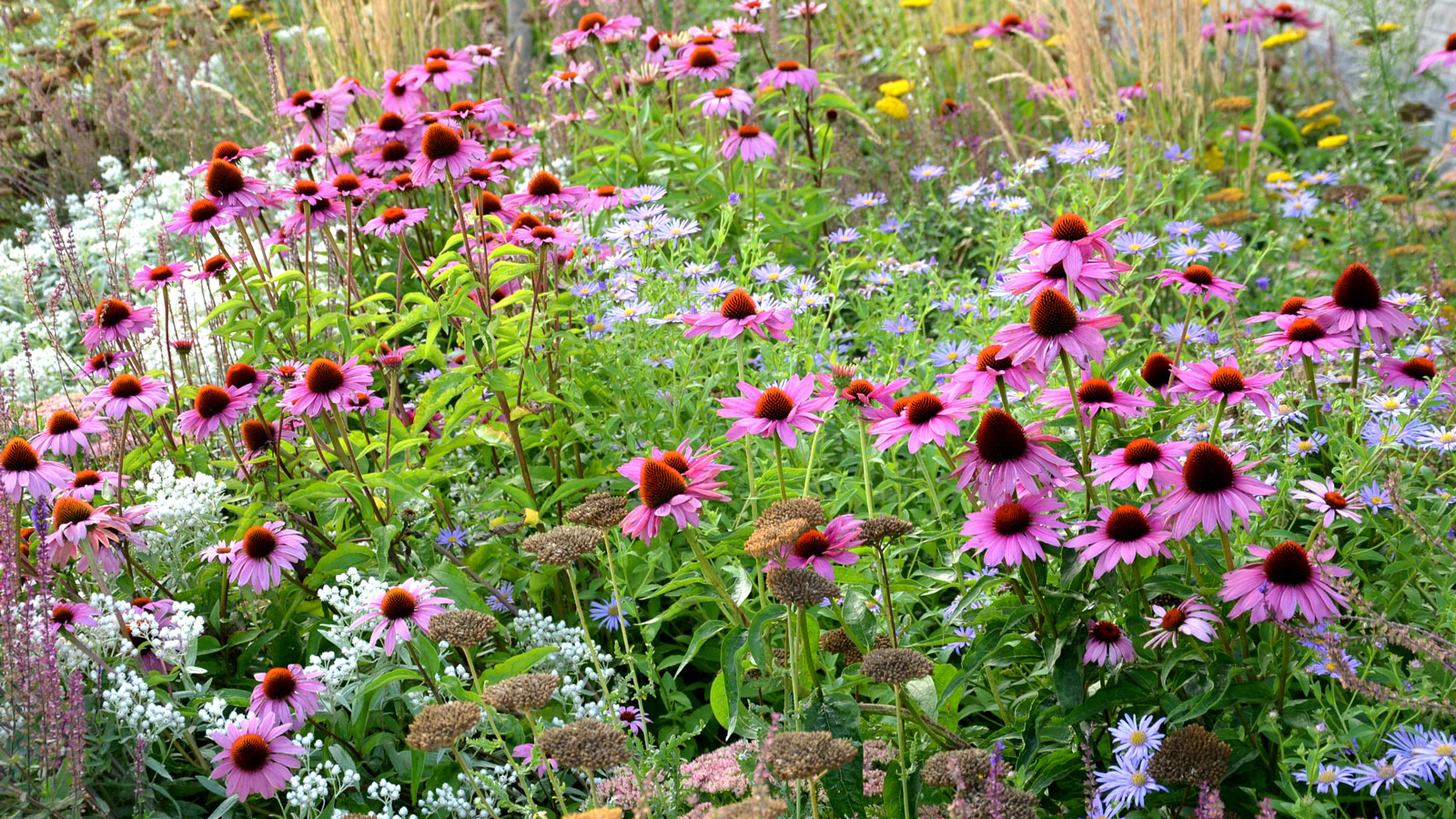
When choosing perennials to pair together, there are a few key points to take into consideration. When I'm planning a border or flowerbed, I think of plants not as individuals, but try to visualise them in pairs as part of bigger groupings. This makes it so much more manageable.
As well as looking good together take into account some practicalities too. Right location is key, and the perennials you choose must be compatible, growing together whether that's in a sunny or shady spot, or somewhere in between. Take into account the space too by paying close attention to the mature height and width of your planting combinations. This ensures that one plant will not crowd out another.
Be sure to choose plants that complement each other in color, as well as harmonising with other plants around. Check seasonality too, so the perennials to pair together bloom simultaneously, as well as growing zone compatibility. If you want to get the look that landscape gardeners do so well, follow our expert advice to give your planting an expert finish with a selection of the best perennials.
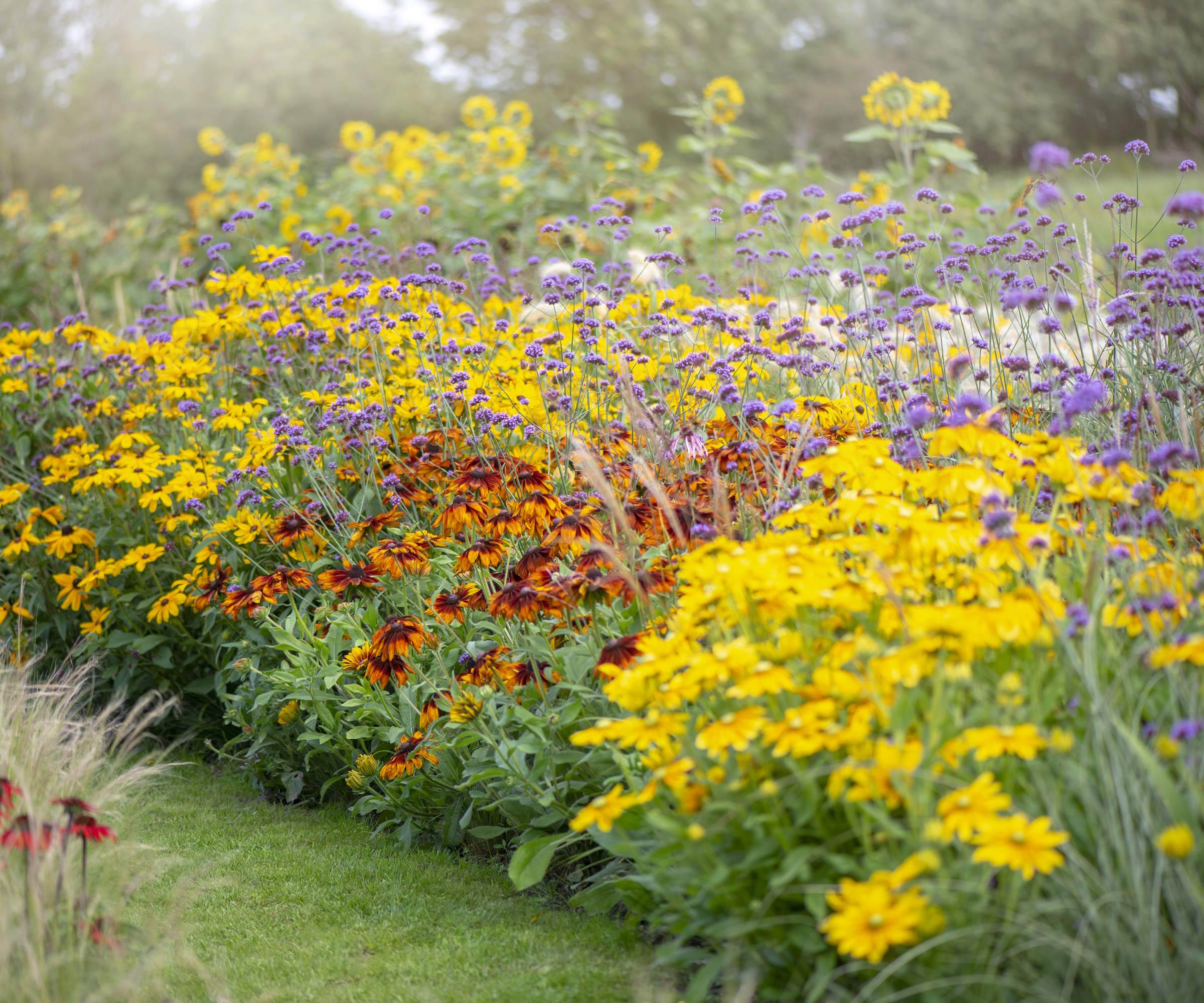
8 ideas for perennial plants that make perfect partners
Including plenty of the longest-flowering perennials in your planting design is the first step to having borders that look good while being low-maintenance too. But with so many to choose from where do you start?
An expert trick is to start small by choosing two varieties that complement each other, and plant them in groups of threes or fives. Then watch as they soon fill borders and flowerbeds with blooms.
The idea is that you plant so densely that you can't see the soil, and your garden will quickly take on a professionally-designed look. Here's how to do it.
1. Add luminous white blooms to shady places
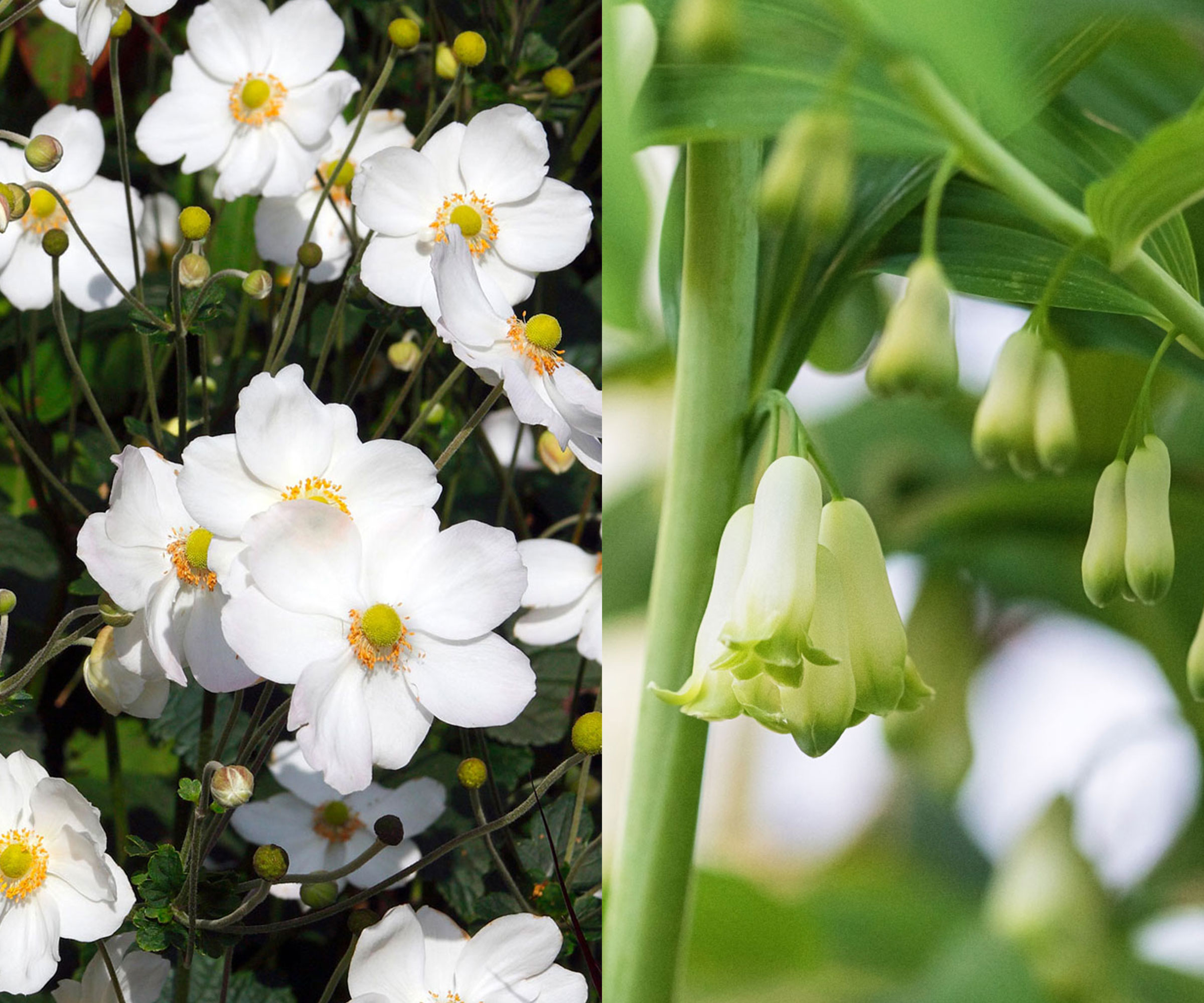
I have planted a mix of shade-loving perennials to brighten dark corners in my urban front yard. I use a selection of leafy flowering plants that thrive in these low-light conditions, offering texture, color, and blooms for months.
My absolute favorite is the super-elegant Anemone ‘Honorine Jobert’ (hardiness zones 4-7), a must-have for every late summer/fall shade garden. Its pristine white flowers on tall stems are a great choice to lighten up shady corners, and it happily spreads around, in a contained sort of way, popping up here and there among other plants. Find out how to propagate Japanese anemones to get more of these plants in your life.
A recent find (new to me) that complements Japanese anemones and other full-shade perennials is beautiful Solomon's seal (hardiness zones 3-9). It has shapely arching leaves and creamy-white, bell-shaped flowers that offer an interesting contrast to the anemones. Also known as Polygonatum, they are drought-tolerant shade plants that don't mind damp conditions either.
2. Plant a magical combo to attract pollinators
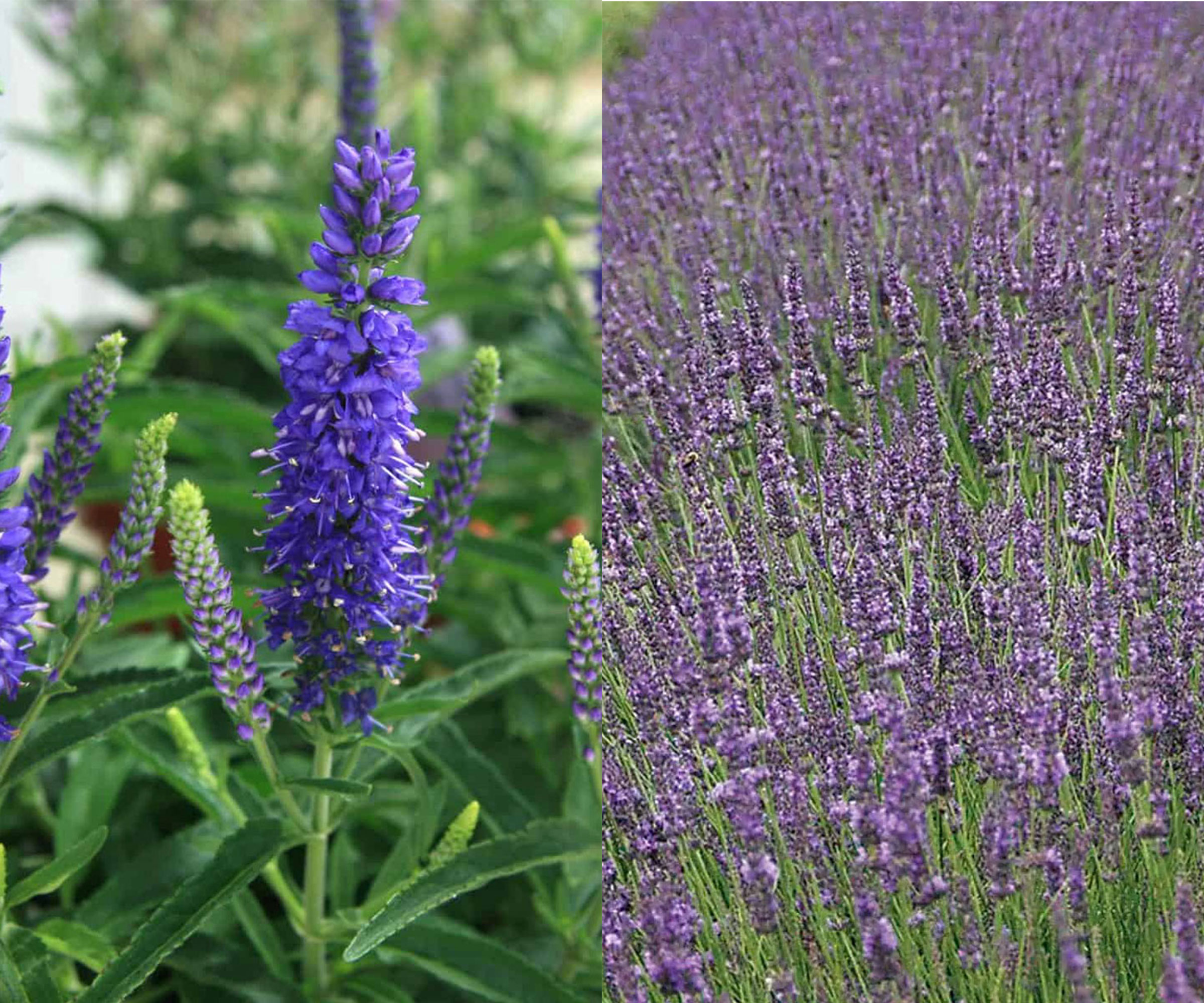
I love including a mix of plants in inky blue-purple tones in my backyard borders, especially if they attract pollinators.
'Generate a buzz in the sunniest spots in your landscape with this pollinator magnet idea,' says Linda Vater, expert for Southern Living Plant Collection. 'This pairing of lavender and Veronica is tied together visually by flower spikes in a range of purple hues.
While landscaping with lavender ideas feel familiar it's always good to find out about a new planting suggestion to keep things fresh.
'Veronica comes in a variety of shades, with the 'Dark Blue Moody Blues'™ (hardiness zones 6a-9b) variety offering deeper, saturated purple tones. Meanwhile 'Phenomenal Lavender' (hardiness zones 5a-9b) brings lightness and fragrance to the combination with lighter-colored blooms and aromatic silver foliage. Both perennials thrive in full sun exposure.'
Previously Veronica wasn't on my radar but seeing this beauty means it definitely is now. By the way, it also comes in red, pink and white colorways.
3. Try a cool foliage duo in a hot spot
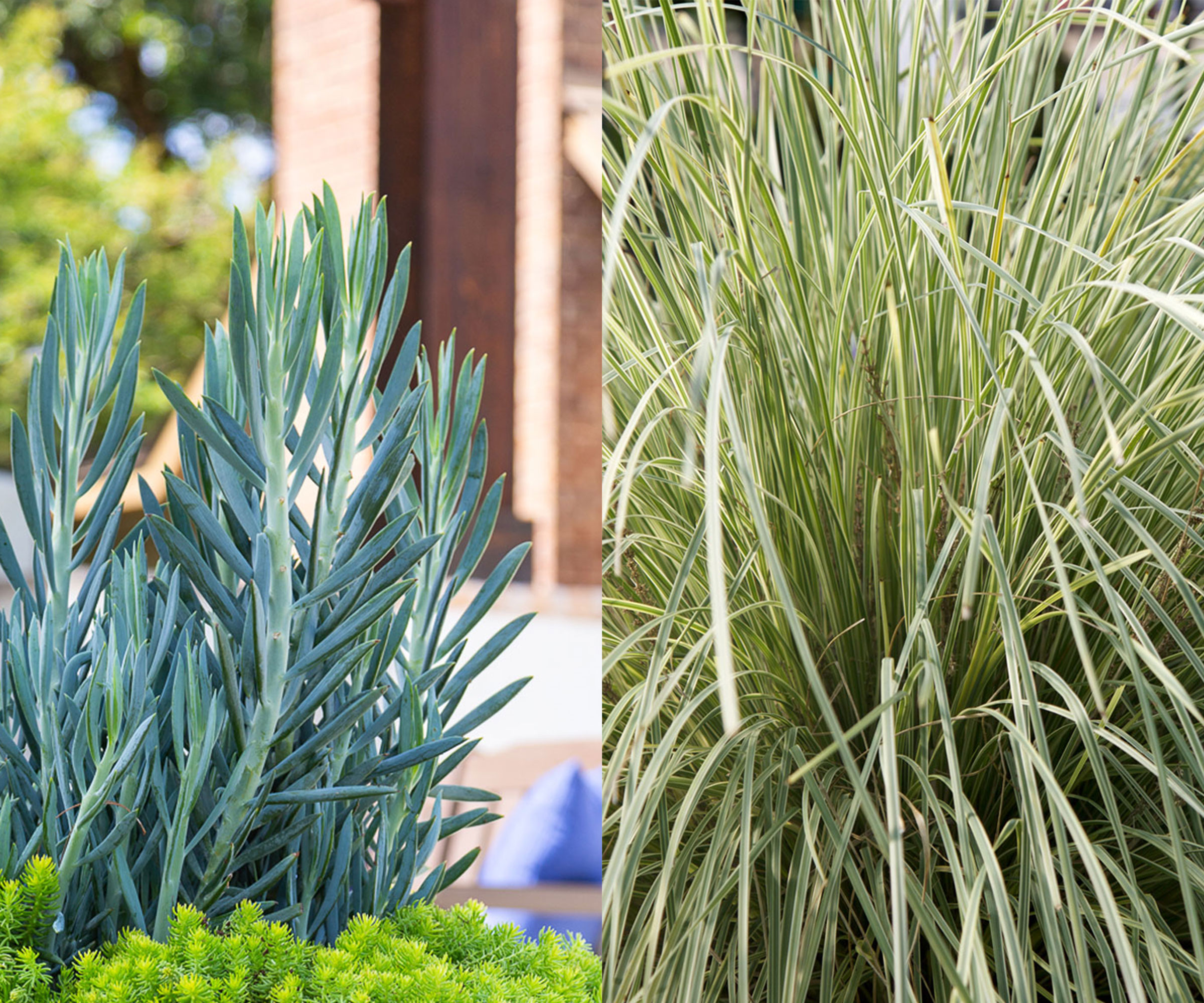
Every perennial garden needs some easy-care foliage plants that fill in the gaps and offer interest throughout the seasons. Even better if they're drought resistant. Sometimes foliage is the big story, as is the case with Senecio and Lomandra.
'When the going gets hot (and dry), this dynamic duo gets growing,' says Linda Vater. 'With remarkable icy hues of frosted blue on the 'Skyscraper'® Senecio and white-edged foliage on this unique variety of Platinum Beauty™ 'Lomandra', this pairing keeps its cool with low-water needs and impressive heat tolerance.'
They pair particularly well in a pot, as the senecio (hardiness zone 10a-11b) climbs upward with its unique vertical habit, while Lomandra (hardiness zone 9a-10b) cascades over the side of the container as both a 'spiller' and 'filler' element. Both perennials thrive in full sun to partial shade exposure.
Lomandra looks like a grass but has recently been reclassified as a member of the asparagus family. It will add texture to your planting scheme to contrast with the vertical accent offered by the ever-lengthening stems (it grows up to 3-4 feet high) of this type of Senecio.
4. Choose a couple of colorful cottage garden classics
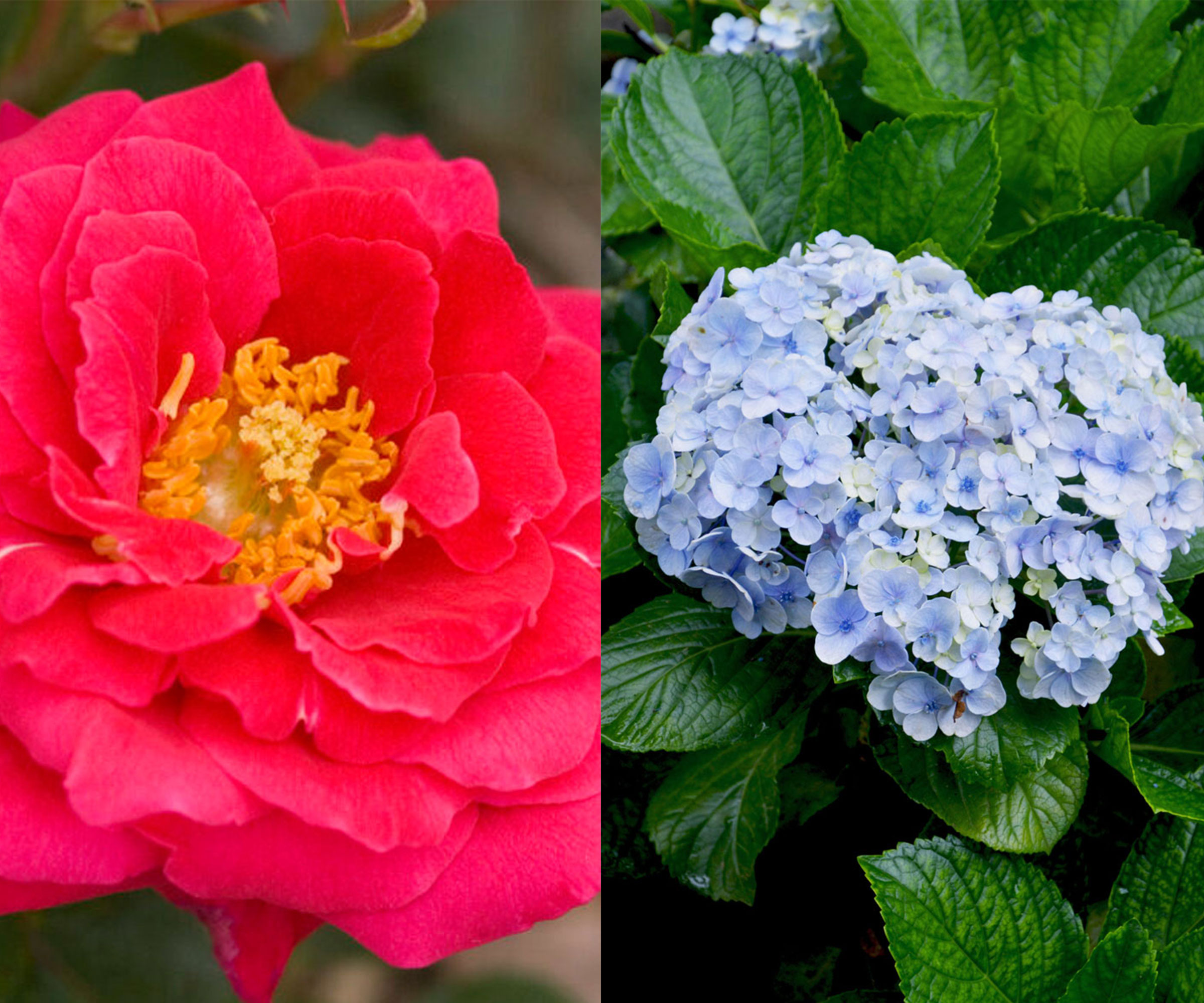
'While it may look unstructured the cottage garden is a surprisingly intentional planting process,' says plantsman and designer Ryan McEnaney. 'While it feels loose, the cottage garden design is all about a charming space that celebrates colorful plants.'
Ryan's new book Field Guide to Outside Style: Design & Plant Your Perfect Outdoor Space, available at Amazon has plenty of ideas to help you choose the right plants, and we love his idea of 'recipe cards' for easy perennial planting.
The two perennials to pair together Ryan has chosen will give you a foundation from which you can build out your landscape. He has gone for a play on blue and deep pink, with 'Endless Summer' hydrangeas and 'My Girl' roses (both hardiness zone 4-9). 'Hydrangeas are a classic plant, and by using a reblooming variety you'll get fresh color from early summer through fall. These are offset by the pink of 'My Girl' rose, another classic species in the cottage garden.'
'Endless Summer' makes it on to our shortlist of the best hydrangea varieties too. Ryan suggests adding a further pair to the mix: the cool tones of Russian sage and a pink garden phlox like 'Bubblegum Pink'.
5. Try pairing flamboyant foliage plants
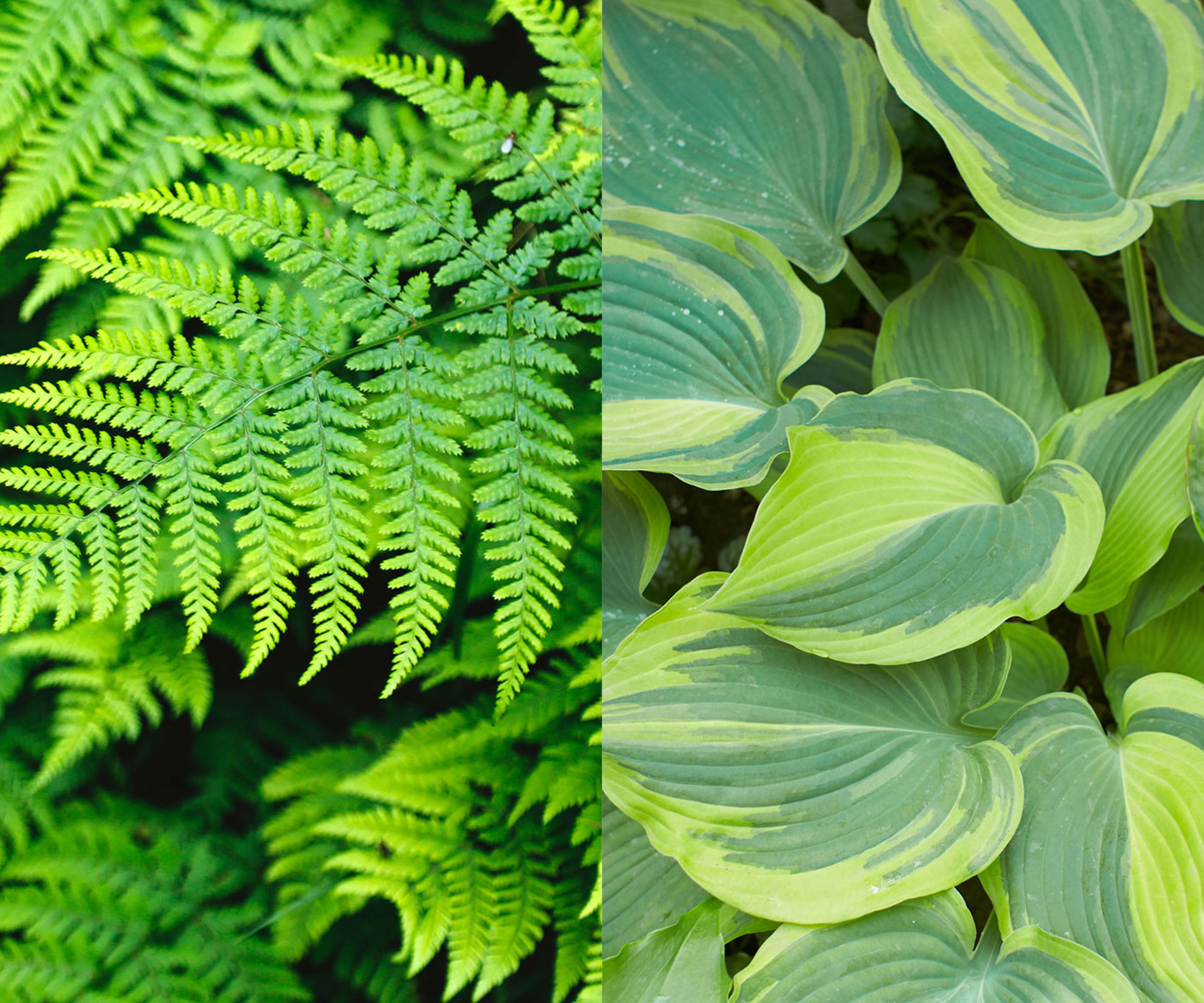
Another of my own favorite perennial planting combos is mixing hostas and ferns together. The shapely leaves of these graceful foliage plants look great interspersed among other plants. They both offer a low-maintenance type of perennial planting that adds an interesting contrast between the fine, feathery fern fronds and the palm-like hosta leaves.
With their heart-shaped leaves and delicate flower spikes in mauve or white in late summer, hostas (hardiness zone 3-9) look fabulous as perennials to pair together with many other plants in addition to ferns. Easy to grow and putting on a long-lasting display of foliage, the showy leaves set off many flowering plants to perfection. I particularly love how the gold and green variegated hostas look planted with the Japanese hakone grass 'All Gold' too.
If you choose evergreen varieties of fern (also hardiness zone 3-9) they offer year-round structure and interest, adding gorgeous greenery for a lush detail in borders and flowerbeds. With their delicately etched foliage they introduce a timeless classic to your outdoor space. I mix ferns with cream-colored feathery Astilbe too as I love the interplay between the delicate foliage of both plants.
6. Choose opposites that attract
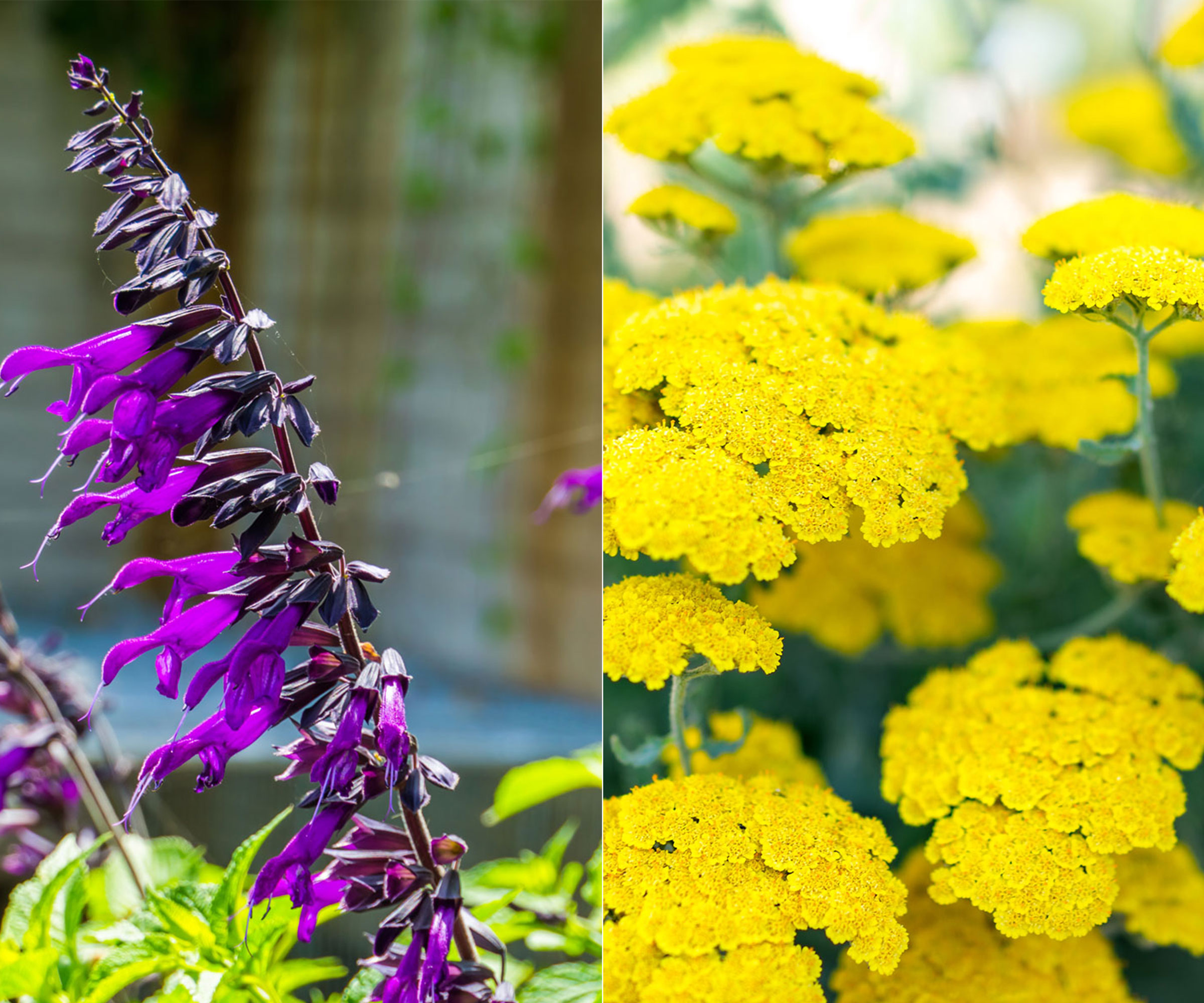
I used to have a problem with yellow flowers but lately I've become something of a convert to them. This mainly started with my passion for the yarrow (Achillea) variety 'Moonshine' (hardiness zone 4a-8b).
I added this long-lasting plant with its bright lemon-yellow flowers in flattened, compound corymbs to a 'hot' border in my garden, where they bring a joyful color splash that's unmatched. The deeply-dissected, fern-like, aromatic, silvery to gray-green foliage is a big plus too.
Bringing the color wheel into play, I added several deep purple Salvia 'Amistad' (hardiness zones 8a to 11b) plants in among the yarrow. The blooms keep coming from early summer until fall, and this long bloom period ties in with the 'Moonshine', which has two flushes in my garden. The flattened shape of the 'Moonshine' flowers contrast well with spiky purple salvia in a mixed planting scheme.
Even better, they are both resilient, easy-care types that can be left alone to do their own thing. Both can also be divided after a couple of years to get more plants, giving that full look in borders. This has to be one of my favorite ideas for perennials to pair together.
7. Grow cutting garden choices
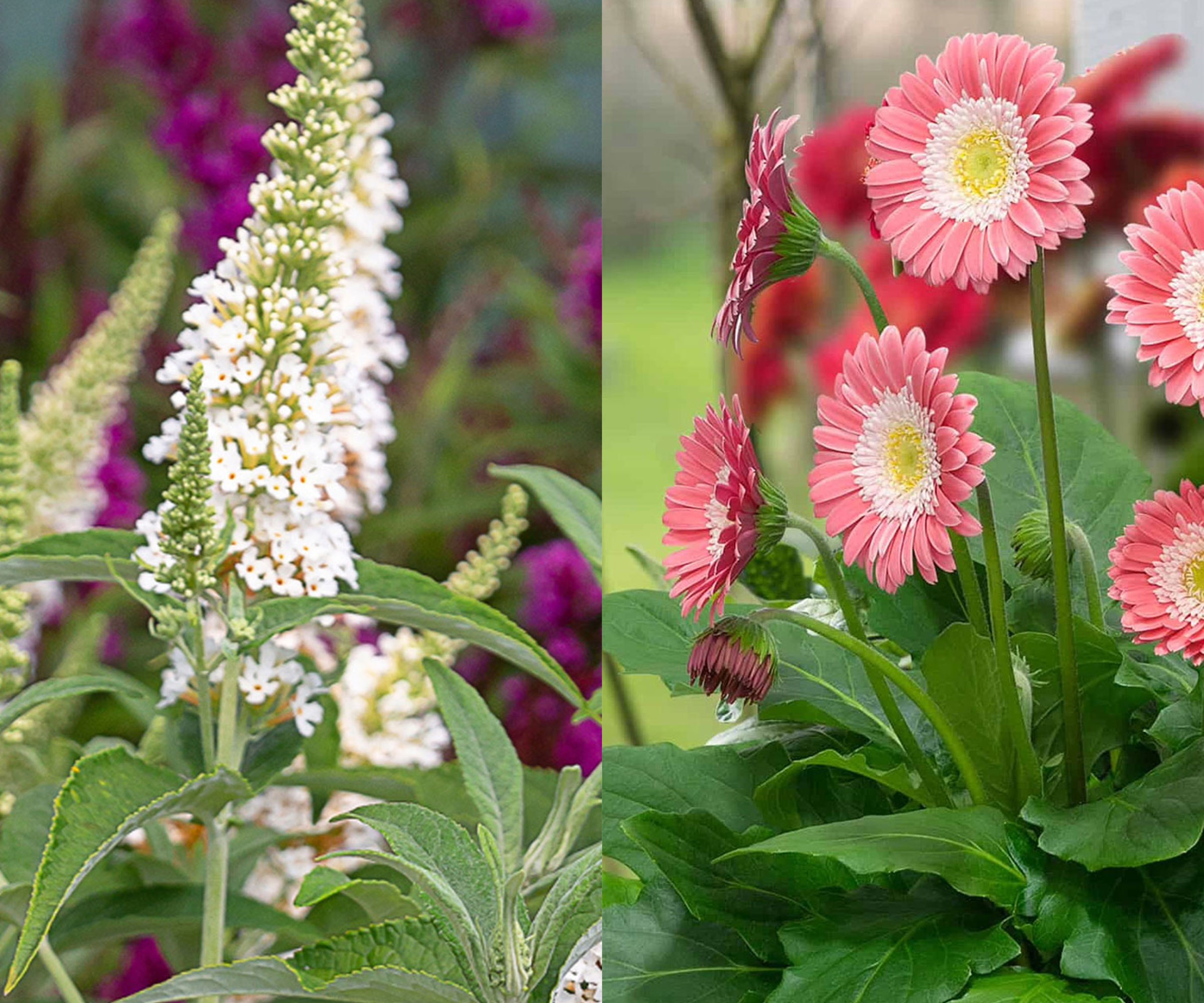
We love the idea of a 'grow your own bouquet pairing' to fill a vase in style with just a few quick snips from the garden. Making a dedicated outdoor space cutting garden flowers is a big trend right now, so you can decorate your home with freshly cut, seasonal blooms you've grown yourself.
'When it comes to cut flower gardens, it’s important to plant repeat-blooming perennials,' says Linda Vater. 'Buddleia and Gerbera daisies are two prolific bloomers that provide scores of flowers from spring through late summer. The more you cut them, the more they bloom.'
In this pairing, Butterfly Towers™ White Buddleia (hardiness zone 5a-10b) provides height and can double as a blooming screen or privacy planting, while perfectly petite Pink Gerbera Daisy Garden Jewels™ (hardiness zone 5a-10b) provide ground-level visual interest. Both like partial to full sun spaces, so you can also grow them side by side.
8. Aim high for dry garden partners
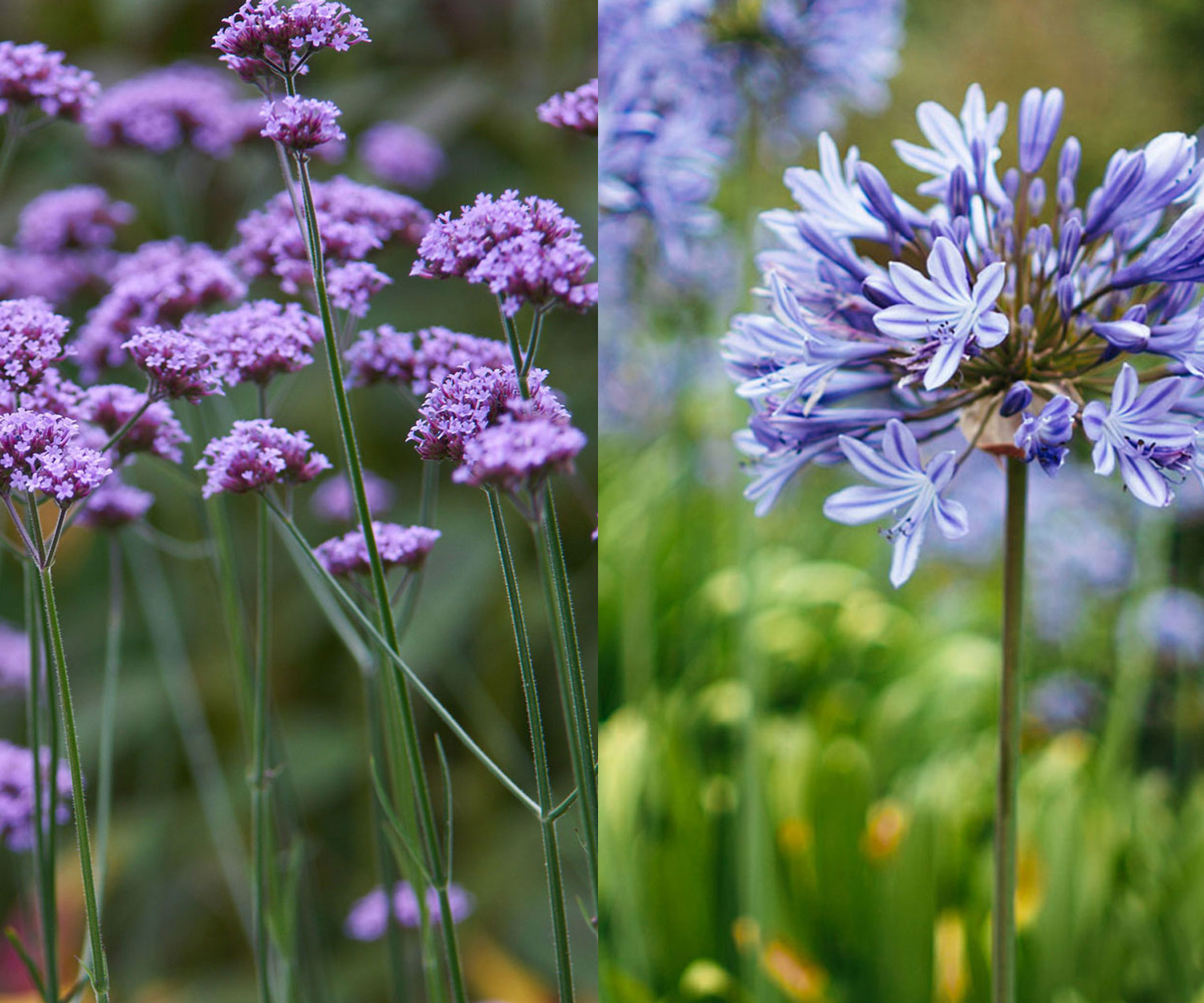
The showy pompom blooms of agapanthus (hardiness zones 8a-11b) make a bold addition if you're looking for ideas for dry garden perennials to pair up. Plant them either in borders or potted up and slotted in to fill gaps. Choose the sunniest spot possible to get the most flowers as these plants love sunshine, and they also like well-drained soil.
Apart from a few white-flowered forms they come mostly in shades of blue, so fit well with the dry garden color palette which favors soft mauve, gray and cream. The towering blooms can reach heights of up to 5 feet depending on the cultivar.
Partner with the tall and airy perennial Verbena bonariensis to add another dynamic note to dry garden borders, where they can grow up to 6 feet tall. Their softly branching stems offer contrast to the firm stems and strap-like foliage of agapanthus.
Verbena also likes to be planted in full sun and well-drained soil, and flowers from late spring right into fall. They come in a choice of rich shades but mainly soft-purple and mauve.
FAQs
Can you pair perennials in a container garden?
Yes, you can definitely pair perennial plants together in a container garden. It's something I do all the time as I'm not a big fan of annual plants that get composted at the end of the growing season. What's more, it's now part of container garden trends too.
With so many varieties of the best perennial plants for pots to choose from it's easy to create stunning combos that are just as eye-catching as those using just annual plants.
Perennials can handle colder weather while annuals generally can't. This means you don't have to worry about things like first frost dates and can plant up container gardens earlier in the season. In some cases, depending on your climate, you can have containers on display that offer year-round interest.
It also means you can grow things that wouldn't normally work in your soil or climate. For example, if your soil is alkaline, you can grow acid-loving perennials in containers. If you live in a northern zone, you can move containers indoors for the winter months to protect your plants.
The good news is many of our ideas for perennials to pair together work in container gardens too, so there are plenty of plants to choose from.
If you love the idea of planting up perennials in pots, why not head over to our expert tips on container gardening for beginners to get you up to speed.
If you're already familiar with this idea but looking for fresh inspiration to take it to the next level try out the best container plants for shade, as well as the best flowers for pots in full sun.







